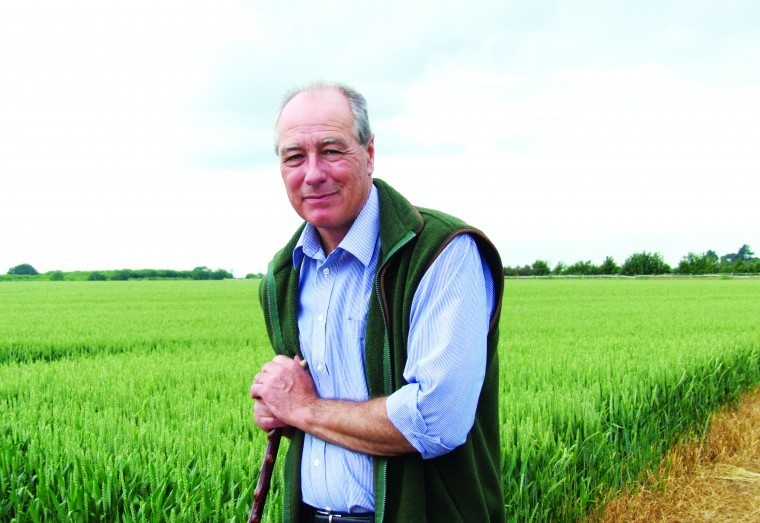The winter oilseed rape is generally late with the earlier crops dying from disease. A lesson relearned but any variety without a decent phoma resistance is not worth planting as no amount of fungicide has prevented serious infection this year. Predictably where we have started to combine those early crops the yields are disappointing.
There is always a range of drivers in choosing varieties but genetic disease control must now be a paramount consideration in all crops. The other factor on heavy land is the broadleaved weed challenge and for the first time this year we are looking at Clearfield varieties to tackle charlock and hedge mustard.
Seed cost is clearly a serious consideration particularly in a year when slugs have made the most of the wet mild months to reproduce in plague numbers. That said, a few weeks dry weather may take a toll on slug numbers before we are drilling oilseed rape, but it is little more than a month away.
The story of disease is replicated through winter wheat crops. As the wet weather continued so the symptoms of fusarium have increased, allied with take all in second wheats, whether treated with Latitude or not. We can all recall the effects of lack of sun from 2012 with the very poor specific weights. It is a bit early to be completely pessimistic but a lot of the promise has vanished in the last few weeks.
Winter and spring beans have also suffered from wet weather disease although on the whole this is reasonably controlled and both are certainly still very green. Pollination and pod set appears to have been a problem with tall dense wet crops proving a barrier to insects successfully pollinating. Although I am not a great supporter of the bee keepers’ view that without bees we would all soon starve, nonetheless with cross pollinating crops they are more relevant and where we have beans near orchards with beehives, pod set appears better.
Spring barleys look well albeit with big straw growth and lodging in nitrogen overlaps already visible. Most will not stand too much rough weather. Disease is a feature and stalwart varieties will have to be replaced with better options. What we will see in terms of yield and quality is just as debatable as the other crops. Overall I am certainly in the pessimistic camp now on all the crops we grow.
Politically we now have certainty as to who is in the cabinet and the junior ministers. We have a range of ministers dealing with foreign affairs, leaving the European Union and international trade all answering to the prime minister. The sight of Liam Fox trumpeting the willingness of Australia to sign a free trade deal with the UK rang alarm bells. This is a country half way round the world of debatable trade importance to us but with an agricultural industry geared to exports. What is there to like about that prospect for farming? No doubt there will be more good news stories to bolster our spirits.
The key question for agriculture and leaving the EU must be whether we remain in Norway style associate membership or become World Trade Organisation trading partners. Until we see some government direction on that it really is difficult to know what we should be lobbying for as an industry.
Effectively there are two possible scenarios to formulate lobbying priorities for and they do not sit easily alongside one another. The one thing that is clear is that on the two year time horizon from signing article 50 and triggering exit, horticultural businesses are going to want a seasonal agricultural workers scheme in place within 12 months so they can ensure a labour supply. This is a simple ask which needs pushing now.
From a business perspective the only way to approach the issue of future farm support is to consider what removal of the basic payment scheme does and then see if our businesses can survive without it. In the run up to the referendum more than one commentator suggested that with land prices where they are and farm profitability where it is retirement should also be considered in all future business scenarios and that may yet be sound advice.
Finally we have not seen a barn owl hunting since last month and with the awful weather I feared this year’s brood had succumbed. However in the last couple of days two fledged chicks have emerged from the owl box to start stretching their wings. In previous years we have seen adults hunting from early dusk to past dawn rearing broods of four and five. Clearly for two chicks the necessary food can be procured in darkness. Two chicks does not bode well for numbers across the country but considering I have seen more barn owls in the last three years at Down Court than I did in the previous five decades it is still an important sign of a healthy countryside.




